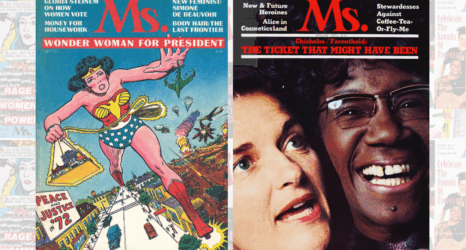In 2012, I took the plunge and wrote a book about the battle to end abortion and birth control access one red state at a time. It was a heart-wrenching, brain-numbing, hair-pulling, high-anxiety commitment. It was also one of the most fulfilling things I have ever done, and one I can’t wait to pursue again.
Writing a book is never a simple task, regardless of what the topic is, who publishes it, what sort of resources you have at your disposal and what your outside responsibilities are. Marketing, for all but the biggest publishers, has become a mandatory part of your author duties. Finding a publisher can necessitate finding an agent, finding an agent often means having a book under your belt and having a book under your belt tends to rely on a publisher or an agent. An advance on a first book is often miniscule for someone unproven, and royalties—if you ever earn them—are at least a year away from a publishing date. Needless to say, the advice “don’t quit your day job” applies.
With so many roadblocks, it’s no wonder that authors find it hard to publish that first work, and women authors even more so. Besides often finding themselves with more responsibilities eating away at their non-paid time, they face a gender gap in publishing as well.
We’ve known for years that when it comes to magazines, publishers are far more likely to put men in print than women, and the same happens in op-eds in newspapers as well. Men still traditionally publish more books outside of “women’s fiction” genres, and you are far more likely to get a book reviewed if you are male.
E-publishing, luckily, has evened the playing field on some of these barriers. With the ability to self publish, more women can get their work out without needing to get through the gatekeeper role of traditional publishing houses. Even better, newer groups hoping to combine the advantages of e-publishing (lower overhead, quicker publishing times) with the benefits of traditional publishing houses (marketing, publicity, larger names), and use both of those paths to help more women get their words read.
“Our goal is to publish as many short e-books by women as we can this year,” says Laura Fraser, co founder and editorial director of Shebooks, a new digital publisher that has opened a new front for getting women into print. The publishing company focuses on mostly female audiences, and unlike the self-publishing route pays authors for their work. “As an author,” says Fraser, “I’ve seen the space for quality women’s writing shrink and shrink. That’s why we started Shebooks, to give more women a platform to publish their work.”
Shebooks is aggressively pursuing that publication path with a new Kickstarter campaign meant to fund the publication of two new titles by women writers per week, ranging from memoirs to fiction to long-form journalism. Perks for funding the campaign include subscriptions to the entire Shebooks library, having an author personally visit your book club or even a writer’s retreat. Says Fraser,
The campaign has really had good momentum. We have raised 75 percent of our $50,000 goal … I’m never comfortable asking people for money, but I’ve found that so many women—and men—are pleased to give money to help publish women writers. I think it speaks to a pent-up frustration on the part of both writers and readers to read richer stories about women’s lives. We’ve been so moved and grateful for the support people have given to the campaign.
It also speaks to the continuing lack of options when it comes to finding high-quality, diverse literature and nonfiction, both by women and catering to a predominately female audience, something that Shebooks cofounder Peggy Northrup—former editor at Glamour and Vogue—believes can be hampered by preconceived notions of “marketability.” Says Northrup,
My motivation for starting Shebooks is to give readers the stories I know they crave—absent the pressure from advertisers who say women’s stories are ‘too real’ (true story) and the pressure to fit everything into an increasingly tiny space (basically the leftover bits after you’ve covered this month’s new eye color). Don’t get me wrong, I’ve got nothing against fashion and beauty magazines, which millions of women love, as do I. But the economics are stacked against everything but that content for women. The kinds of stories that women love to read, share and talk about are disappearing. We want Shebooks to help reverse that trend.
With two weeks remaining in their fundraising campaign, Shebooks is just under $13,000 away from that goal. Hopefully, with the support of enough donors, they will be able to open those gates for a new set of women to see their own stories become reality.
Photo courtesy of timetrax23 via Creative Commons 2.0.





